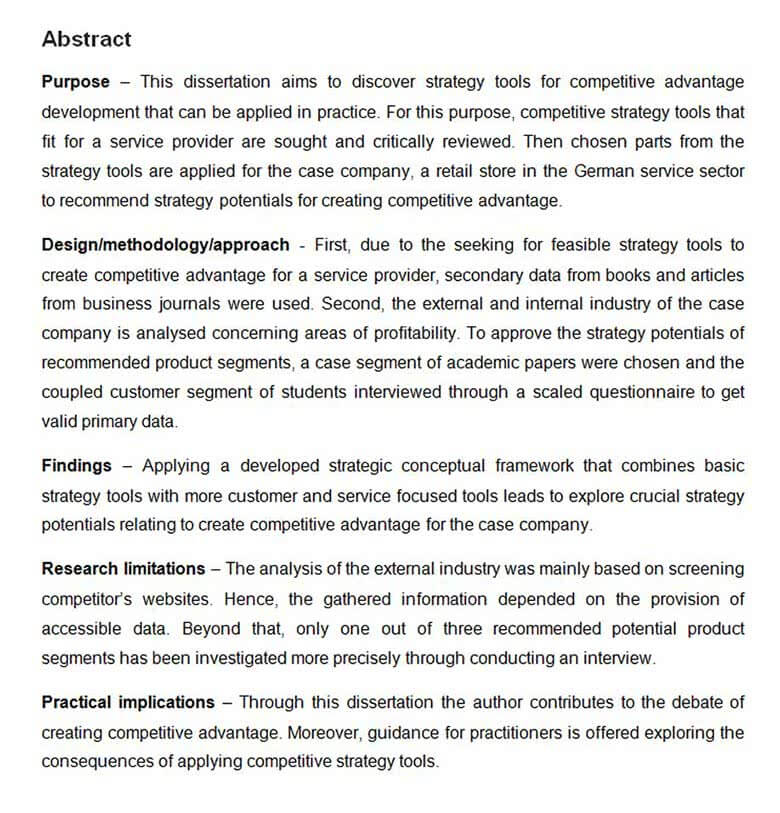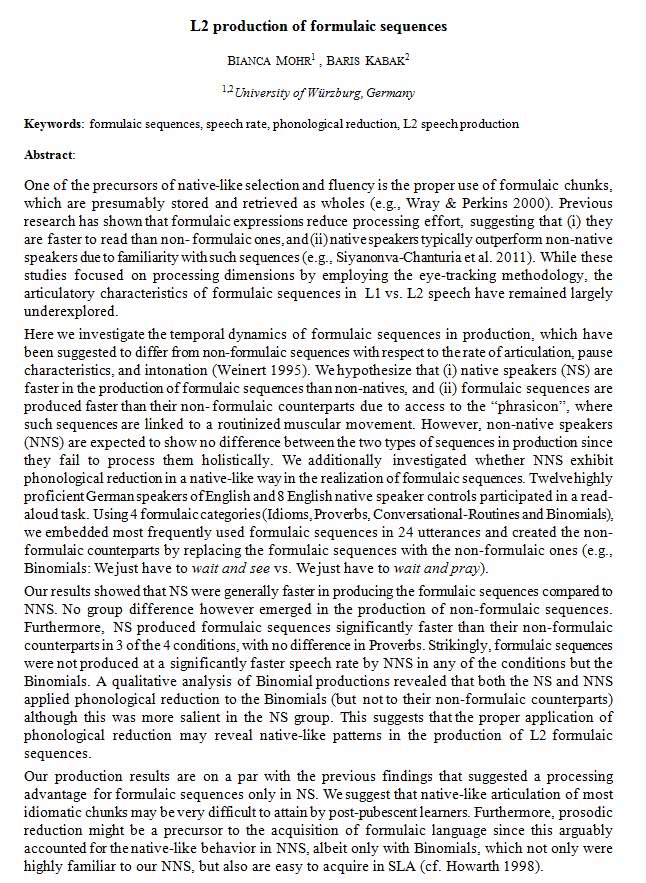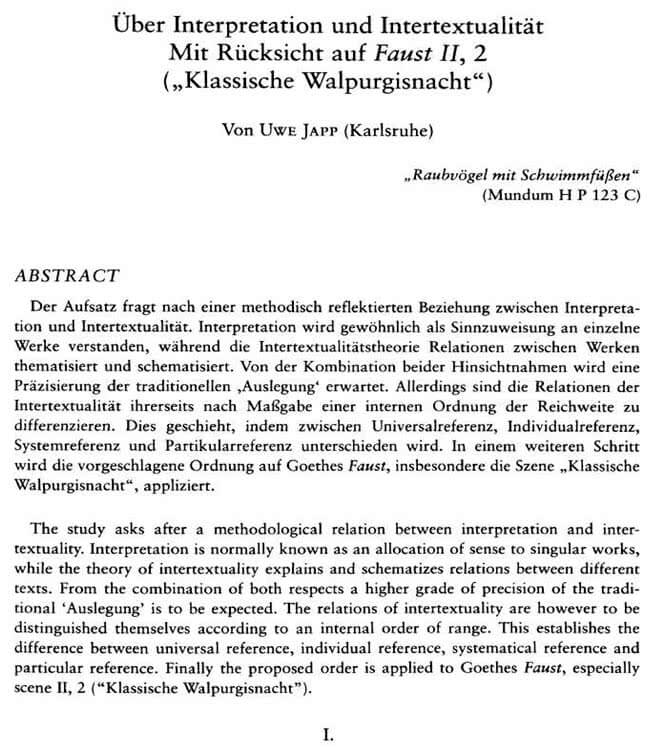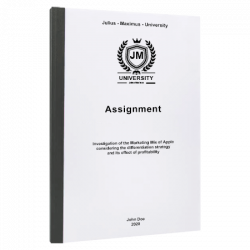
Definition: Abstract
An abstract is a short summary of a research paper. It is not part of the actual text and must be included at the very beginning of your work. It does not show up in the structure and the table of contents of your thesis.
You write an abstract to give a brief account of the most important information relating to the research background, structure, method, data analysis, and results of your research paper. The abstract should not create suspense: Making it very clear early on what your results are will help the reader evaluate the relevance of your paper.
in Your Thesis
FAQs
An abstract is a short summary written at the beginning of a research paper. It highlights the main ideas of your academic project. Your research methods, data analysis, results plus any background information relating to your research should be included in the abstract.
An abstract is nescessary, as it helps the reader to decide whether the results and methods of a particular paper are relevant to them or whether it is worthwhile for them to read the whole paper. It effectively creates the first impression of the thesis or essay. It is also very useful for fellow researchers in the academic community, as they can decide upon first glance whether or not the paper can be useful or relevant to their personal research project.
The abstract is to be put at the beginning of your writing project. It should appear between the title page and the table of contents page of the research paper. If you’re writing a thesis with an acknowledgements page, then the abstract is placed after the acknowledgements.
The abstract should be the very last thing you write during the academic writing process. This is because it is only possible to come up with a precise summary of your work once you have written the whole research paper. Using this same logic, the conclusion should also be one of the very last paragraphs that you write.
The abstract should be between one third of a page and one full page in length. However, this depends on the length of the paper that you’re writing. For a smaller research paper, 100 words is sufficient. For a bachelor’s thesis, or a master’s thesis, the abstract should be between 1 or 2 pages. But it should definitely not exceed 2 pages!
Tip: Take a look at some abstract examples for inspiration!
A top-quality abstract will include a brief explanation of the following aspects:
1. Background and purpose
2. Overarching research question
3. Gap in literature and methods used to address the gap in literature
4. Main results of the writing project
5. Interpretation or conclusion of the thesis statement
Each of these points should be addressed in only a few sentences.
It doesn’t matter which language you write your abstract in, an English translation of your abstract is often required. The reason for this is so that the results of your research paper can be reviewed by an international audience.
Also useful: What is plagiarism?
How to Write an Abstract: The Content
There is one thing you must understand about how to write an abstract:
The abstract should contain important aspects of the paper, like the
- research question,
- purpose,
- scope,
- limitations,
- study design,
- methods,
- main results,
- main idea or message,
- key interpretations,
- implications,
- and validity (cf. Schnur 2005, as quoted in Theisen 2013: 101).
How to Write an Abstract: Structure
The abstract follows the same structure as your paper:
| Abstract structure | Content |
| Introduction | Research question, research context, gap in literature, hypotheses |
| Method | Approaching (and attempting to close) the gap in literature: methods, study design, and data analysis (e.g. coding, statistical analysis) |
| Results | Main results (positive and negative) |
| Discussion | Interpretation of results: limitations and weaknesses, practical implications, suggestions for future research, discussion of theoretical aspects, etc. |
(cf. Kruse 2007: 186)
How to Write an Abstract: Goal
“An abstract is a very precise summary of your whole paper”
You might have heard the term ‘summary’ referring to an abstract of a research paper (cf. Oertner, St. John, & Thelen 2014: 93). However, do not make the mistake of assuming that an abstract is something rather general. You would be on the wrong track. When asked to write an abstract for your bachelor’s or master’s thesis, you are expected to deliver a very precise summary of your whole paper.
An abstract’s right to exist is founded in its purpose of helping a potential reader to quickly find out if it is worthwhile to read the whole paper (cf. Rossig & Prätsch 2005: 89). For this reason, an abstract has to offer everything the reader needs in order to evaluate the relevance of a research paper for their own work. It is the ultimate way of advertising your research.
You can save yourself a lot of work and trouble if you concentrate on reading the abstracts of published papers first; most papers these days provide abstracts (cf. Oertner, St. John, & Thelen 2014: 80). If you take your time to thoroughly read the abstracts, you will be able to judge whether a particular article will help you to support your line of argumentation. If not, then just move on the next article. You can check out the sample abstracts in this blog entry to get a better idea of how to write an abstract and what an abstract looks like.
“Through reading an abstract, you can find out if a paper arouses your interest or is relevant for your studies.”
How to Write an Abstract: Length
An abstract is a summary of a publication or an article on one third of a DIN-A4 page (cf. Kruse 2007: 185). Stickel-Wolf & Wolf provide a rough guideline for the word count: They say that an abstract should not contain more than 100 words (cf. 2013: 249).
Note: Generally speaking, an abstract for a bachelor’s or master’s thesis should not exceed one page, and the absolute maximum is two pages (cf. Rossig & Prätsch 2005: 89). The reason for this is self-explanatory: The purpose of the abstract is to offer a quick overview of, for example, a 60- or 80-page paper.
Examples
Abstract Example 1: English abstract addressing the main points of your paper

Abstract Example 2: English abstract of a master’s thesis with keywords

Recommended: Harvard Referencing
- ✓ Free express delivery
- ✓ Individual embossing
- ✓ Selection of high-quality bindings
When to Write the Abstract and Where to Put It
You are probably wondering where the abstract should be placed in your research paper: at the beginning or towards the end? It is common to include the abstract right at the beginning (cf. Rossig & Prätsch 2005: 89; Samac, Prenner, & Schwetz 2009: 56). As we have established, it is a helpful tool for the reader to get an overview of the whole paper as early as possible. It is good to know what will follow. So, it would not be logical to put it at the end, right? Stickel-Wolf and Wolf recommend embedding the abstract in between the title page and the table of contents (cf. 2013: 249).
The next question about ‘How to write an abstract’ is a bit trickier. When is the right time to write the abstract? Given that it is to be added at the very beginning, before the actual text, you might think it is the first thing you are supposed to write. However, you will not be able to write a clear-cut and precise summary at a stage when you do not even know what you are summarizing. Therefore, you can only write the abstract after you have written the whole paper. How else would you know enough about your results to give a complete record of your whole work (cf. Rossig & Prätsch 2005: 89)?
Note: You can draw essential information to write your abstract from your conclusion, as this part briefly repeats the research questions and provides an evaluative summary of the results (cf. Stickel-Wolf 2013: 249).
Abstract in Different Languages
The question of how to write an abstract is popular not just in an English-speaking context.
It increasingly concerns international students as well. Nowadays, it is becoming more and more important to write the whole paper in English, rather than in the native language of the country a student studies in. Indeed, many papers are still written in the native language of the country.
But your research paper not being written in English does not mean that this also holds true for the abstract. Often, the student needs to write an abstract in not only German, Spanish, or French (depending on the country you study in) but also English.
An English abstract (in addition to, say, a German abstract) is necessary to ensure that a research paper will be accessible to an international market.
Sometimes, only an English abstract is required. Also, as Samac, Prenner, and Schwetz point out, an English translation of the German text (if your thesis is in German) must be provided on the very same page to meet international standards (2009: 56).
Example of an abstract in German and English

Note: Academic English is quite a bit different from academic German, Spanish, and other languages. We recommend that you read research papers in English to get a feel for the differences in style and structure (cf. Karmasin & Ribing 2014: 45).
Abstract vs. Conclusion
Caution: The abstract is NEVER a conclusion of your research paper and it differs from the conclusion in many aspects. Make sure to read the sample abstracts provided on this page to get a good grasp on the major differences between the abstract and the conclusion.
| Abstract | Conclusion |
| Very short, in many cases even less than 150 words (cf. Kruse 2007: 186) | More detailed, includes discussion and evaluative summary (cf. Kruse 2007: 186) |
| At the beginning of the paper | At the end of the paper |
| Not part of the actual text, does not appear in the structure and table of contents (cf. Rossig & Prätsch 2005: 89) | Vital part of the text, must appear in the structure and table of contents |
| Without evaluation of the author, focus on giving an accurate report of the contents and the results of a research paper (cf. Theisen 2013: 101) | Evaluation and conclusion based on the secondary sources quoted and/or own data |
| Can be read and understood independently of the whole text—e.g. can be accessed in a database (cf. Kruse 2007: 186) | Integrated part of the text, cannot be understood without reading the whole text, context needed (cf. Kruse 2007: 186) |
Assignment Printing & Binding
You are already done writing your assignment and need a high quality printing & binding service? Then you are right to choose BachelorPrint! Check out our 24-hour online printing service. For more information click the button below:
In a Nutshell
- An abstract is a short summary of a research paper. It is embedded between the title page and the table of contents, and appears before the actual text.
- The abstract should not exceed one page (at the most, two pages). Ideally, it should fit on a single page.
- An abstract is a brief account of your paper. It provides information about the structure, argumentation, method, and results of your research paper (cf. Oertner, St. John, & Thelen 2014: 93).
- The aim of writing an abstract is to make it possible for the reader to quickly evaluate the relevance of your work without having to read much. Also, reading abstracts makes your life easier when you are doing research. You can decide which paper is worth reading and which one is not, just based on the abstract.
- There is a clear difference between the abstract and the conclusion. The abstract is shorter, can be read independently of the text, and does not contain evaluations of the author which are not already part of the text (cf. Kruse 2007: 186).
- Writing an English abstract or providing an English translation of your abstract is becoming increasingly important and popular. In this way, your research can be made internationally accessible.
Works cited
Karmasin, Matthias, & Rainer Ribing. 2014. Die Gestaltung wissenschaftlicher Arbeiten. 8th Edition. Vienna: Facultas.
Kruse, Otto. 2007. Keine Angst vor dem leeren Blatt – Ohne Schreibblockaden durchs Studium. 12th Edition. Frankfurt: Campus.
Oertner, Monika, Illona St. John, & Gabriele Thelen. 2014. Wissenschaftlich Schreiben – Ein Praxisbuch für Schreibtrainer und Studierende. Paderborn: Wilhelm Fink.
Rossig, Wolfram E., & Joachim Prätsch. 2005. Wissenschaftliche Arbeiten. 5th Edition. Weyhe: PRINT-TEC.
Samac, Klaus, Monika Prenner, & Herbert Schwetz. 2009. Die Bachelorarbeit an Universität und Fachhochschule. Vienna: Facultas.
Stickel-Wolf, Christine, & Joachim Wolf. 2013. Wissenschaftliches Arbeiten und Lerntechniken – Erfolgreich studieren – gewusst wie! 7th Edition. Wiesbaden: Springer Gabler.
Theisen, Manuel René. 2013. Wissenschaftliches Arbeiten – Erfolgreich bei Bachelor- und Masterarbeit. Munich: Franz Vahlen.

